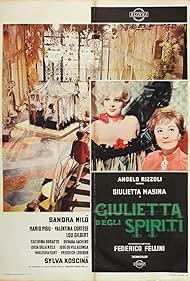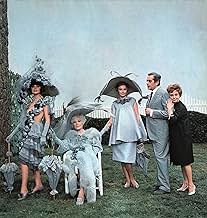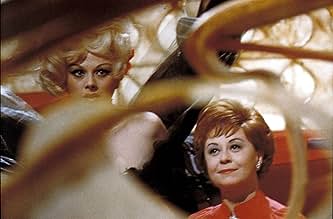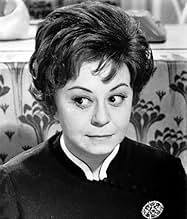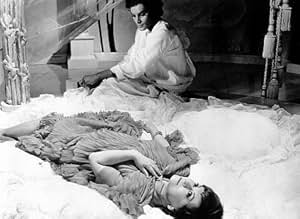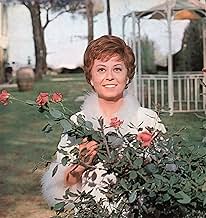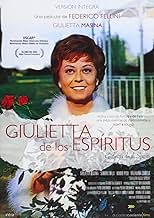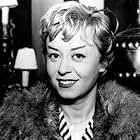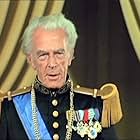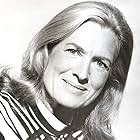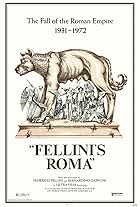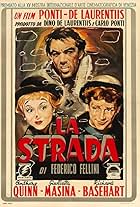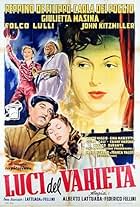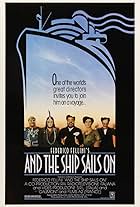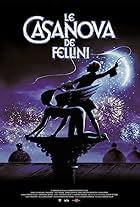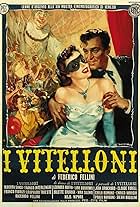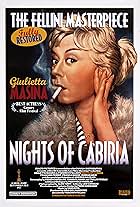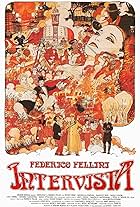ÉVALUATION IMDb
7,4/10
15 k
MA NOTE
Visions, souvenirs et mysticisme aident une femme de la quarantaine à trouver la force de quitter son mari infidèle.Visions, souvenirs et mysticisme aident une femme de la quarantaine à trouver la force de quitter son mari infidèle.Visions, souvenirs et mysticisme aident une femme de la quarantaine à trouver la force de quitter son mari infidèle.
- Nommé pour 2 oscars
- 12 victoires et 5 nominations au total
José Luis de Vilallonga
- Giorgio's friend
- (as José De Villalonga)
Friedrich von Ledebur
- Headmaster
- (as Fredrich Ledebur)
Milena Vukotic
- Elisabetta, the maid
- (as Milena Vucotic)
- …
George Ardisson
- Dolores' model
- (as Giorgio Ardisson)
Histoire
Le saviez-vous
- AnecdotesDirector Federico Fellini claimed he took LSD in preparation for making this film.
- Citations
Giulietta Boldrini: I don't care about the clemency you offer me but the salvation of my soul.
Commentaire en vedette
"Juliet of the Spirits" is one way, I suppose, to make a dissatisfied bourgeois housewife's life look intriguing--a colorized "8 1/2" (1963) for writer-director Federico Fellini's actress-wife, Giulietta Masina. Most of this one involves her concern over her husband's philandering, but there's also her childhood memory--apparently, a traumatic event of some sort--of playing the central role of the martyr in a Catholic-school play. Plus, there's the circus of fashion and sex in the world of modeling and other carnivalesque endeavors that seems to surround her through her husband's work and that of her other family members, friends and neighbors. Much of this bombards her as surreal visual and audible hallucinations. I don't care to get into the Freudian or Jungian analysis of her problems, though. That nonsense is quite dull--like a lazy housewife dozing off while sunbathing on a beach. Kudos to Fellini, though, for making it look a sumptuous spectacle.
Instead of the director double standing in for Fellini in "8 1/2," who faces a creative crisis, the housewife here traces her marital trap back to the stage of her religious performance. Eventually, the promise of her salvation involves rescuing that childhood memory. This also seems to be the key, slight as it may be, to suggestions that "Juliet of the Spirits" alludes to Lewis Carroll's Alice books. I've been seeking a bunch of films inspired by that children's literature since reading them, and I came to this after reviewing Woody Allen's "Alice" (1990), which is said to be a reworking of this Fellini film, which also seems to be a slight connection to me having now viewed both, but I digress. If there is some of Carroll's Alice in Fellini's Giulietta, it's in their shared repressed childhood. Of course, the Alice books predate Freud and Surrealism and are nonsense rather than analytical, but they likewise parody their protagonist's outer reality within the dreamworld. That includes nursery rhymes and other prior children's literature. Likewise, "Juliet of the Spirits" ends up parodying film by turning it into a mode for surveillance of the husband's dalliances, or as a source of mockery via television.
Besides, akin to Wonderland, taking place along beaches, gardens and forests, note, too, how this film begins and ends visually. Within the first scene, there is a virtuoso shot through a series of looking glasses--announcing a mirror motif that continues to some extent throughout the picture. And, the ending includes the opening of a small door, so that Giulietta may finally enter the tunnel she's heretofore repeatedly shunned--especially as offered by her Caterpillar of a neighbor, who sports a butterfly tattoo (not as explicit as the White Rabbit ink in "The Matrix" (1990), but still...) and tries to show Giulietta who she may become. Although, with all the ridiculous head gear here, there really ought to be a Mad Hatter about; after all, it was a cat, like the Cheshire one with Alice, that led Giulietta to her neighbor's mad Champagne party (hey, they're Italian--not English). Moreover, the neighbor guides her quite vividly, what with the sex mirror on the ceiling, all of the deflowering going about alongside her flower-covered staircase, and the vaginal-like openings, through a pool slide and a hole to a platform in the trees (where, presumably, more sex is to occur). It's this Wonderland nonsense that's lustrous.
Instead of the director double standing in for Fellini in "8 1/2," who faces a creative crisis, the housewife here traces her marital trap back to the stage of her religious performance. Eventually, the promise of her salvation involves rescuing that childhood memory. This also seems to be the key, slight as it may be, to suggestions that "Juliet of the Spirits" alludes to Lewis Carroll's Alice books. I've been seeking a bunch of films inspired by that children's literature since reading them, and I came to this after reviewing Woody Allen's "Alice" (1990), which is said to be a reworking of this Fellini film, which also seems to be a slight connection to me having now viewed both, but I digress. If there is some of Carroll's Alice in Fellini's Giulietta, it's in their shared repressed childhood. Of course, the Alice books predate Freud and Surrealism and are nonsense rather than analytical, but they likewise parody their protagonist's outer reality within the dreamworld. That includes nursery rhymes and other prior children's literature. Likewise, "Juliet of the Spirits" ends up parodying film by turning it into a mode for surveillance of the husband's dalliances, or as a source of mockery via television.
Besides, akin to Wonderland, taking place along beaches, gardens and forests, note, too, how this film begins and ends visually. Within the first scene, there is a virtuoso shot through a series of looking glasses--announcing a mirror motif that continues to some extent throughout the picture. And, the ending includes the opening of a small door, so that Giulietta may finally enter the tunnel she's heretofore repeatedly shunned--especially as offered by her Caterpillar of a neighbor, who sports a butterfly tattoo (not as explicit as the White Rabbit ink in "The Matrix" (1990), but still...) and tries to show Giulietta who she may become. Although, with all the ridiculous head gear here, there really ought to be a Mad Hatter about; after all, it was a cat, like the Cheshire one with Alice, that led Giulietta to her neighbor's mad Champagne party (hey, they're Italian--not English). Moreover, the neighbor guides her quite vividly, what with the sex mirror on the ceiling, all of the deflowering going about alongside her flower-covered staircase, and the vaginal-like openings, through a pool slide and a hole to a platform in the trees (where, presumably, more sex is to occur). It's this Wonderland nonsense that's lustrous.
- Cineanalyst
- 19 août 2020
- Lien permanent
Meilleurs choix
Connectez-vous pour évaluer et surveiller les recommandations personnalisées
Détails
- Date de sortie
- Pays d’origine
- Langues
- Aussi connu sous le nom de
- Juliet of the Spirits
- Lieux de tournage
- sociétés de production
- Consultez plus de crédits d'entreprise sur IMDbPro
Box-office
- Brut – à l'échelle mondiale
- 8 734 $ US
- Durée2 heures 17 minutes
- Mixage
- Rapport de forme
- 1.85 : 1
Contribuer à cette page
Suggérer une modification ou ajouter du contenu manquant

Lacune principale
By what name was Juliette des esprits (1965) officially released in India in English?
Répondre